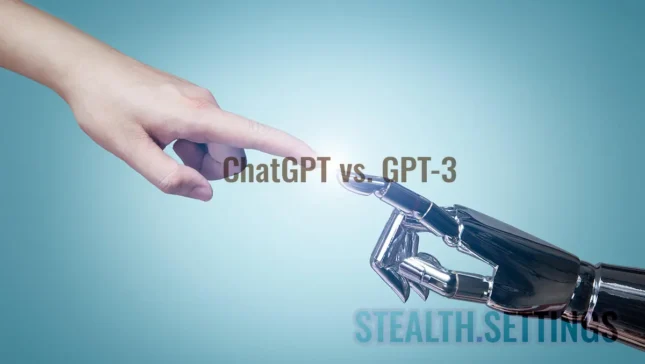About artificial intelligence languages are still hearing more and more, since the company Openai started a real revolution whose base is GPT technology. If you are curious, in this article discover what the difference between chatgpt and GPT-3, the two broad language models (LLM) developed by the Openai company.
Chatgpt is very well known, being already publicized and used on a large scale in almost all areas. Based on GPT-3, many people consider these two terms, chatgpt & GPT-3 are synonymous or that they refer to the same thing. In fact, even if both models have been created by Openai and are based on the same technological foundation, there are significant differences between them.
What is the difference between chatgpt and gpt-3?
so much Chatgpt and GPT-3 There are two models of wide language (Large Language Model – LLM) developed by the company Openai, each with distinct elements and functionality.
Chatgpt is a wide language, trained to interact through conversations with the user, capable of providing coherent answers in natural language, similar to the human one. On the other hand, GPT-3 is trained on a larger amount of data, being able to generate both a text similar to the human one and tasks in different fields of activity.
Therefore, Chatgpt is suitable for interactive dialogue, while GPT-3 is better for tasks that require longer and richer responses.
GPT-3 is appreciated for its ability to complete sentences, to generate coherent paragraphs, to make translations in several languages, to answer questions and to create code in several programming languages. On the other hand, GPT-3 requires integration knowledge for Openai API, while Chatgt offers a very friendly web interface and an iPhone application, iPad.
With all these capacities, the use of GPT-3 is questioned in many fields. These technologies of Generative artificial intelligence quite a lot of mistakes or may have “hallucinations”. To say untrue things or other nonsense in natural language.
Both GPT-3 and Chatgpt running GPT 3.5 Turbo, have been outdated by GPT-4. A language model trained on a much larger amount of data, capable of supporting very complex conversations and tasks, generating text and images, being much more creative and autonomous.
Users with Chatgpt Plus subscriptions can activate the GPT-4 engine for interaction by web interface, app or modules.
